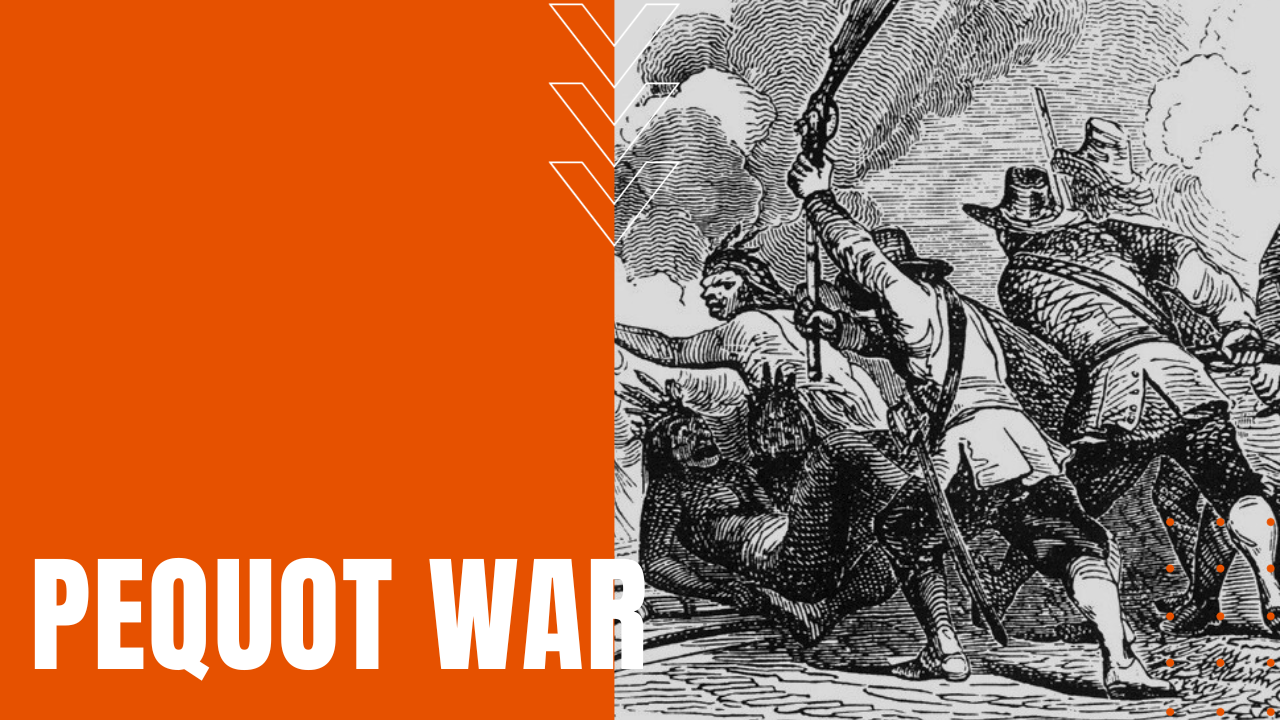The Pequot War

After Dutch and English settlers encroached upon the approximate 250 square miles of Pequot territory in southeastern Connecticut, tensions simmered between the Native American tribe of some 4,000 men, women and children who had survived the smallpox epidemics of 1633 and 1634, despite robust trade alliances in fur and wampum between the Pequots and their foreign invaders.
The Match is Lit
Attempting to break the Dutch/Pequot hold on the fur trade following England’s late arrival into North America, after the July 1636 murder of English trader John Oldham by the Manisses people of Block Island, a month later, Massachusetts Bay Colony sent a force of 90 soldiers under the command of Colonel John Endicott to the site of Oldham’s murder, with orders to kill all the men, while capturing surrendering women and children.
Scorched Earth
Establishing a base camp at present-day Crescent Beach after the first amphibious landing in the New World, Endicott’s forces were reduced to burning native villages after the Manisses fled into the swamps for safety. Moving on to the Thames River, the English burned Pequot villages in retaliation for the 1634 murders of English trader John Stone and his crew, which prompted Pequot warriors to lay siege to Fort Saybrook during the autumn and winter of 1636, before raiding towns in Connecticut that led to the deaths of some 30 English settlers.
A Time for War
Raising a militia of colonists from the Massachusetts Bay, Plymouth and Saybrook Colonies, along with some 270 Mohegan and Narragansett warriors—both avowed enemy of the Pequots—in the predawn hours of May 26th, colonial forces led by Captains John Mason and John Underhill slaughtered some 500 Pequots in what became known as the Mystic Massacre. Fleeing their villages in desperation, the surviving Pequots were captured by Mason and 200 English and Mohegan fighters in mid-June, in an event memorialized by the English as the Fairfield Swamp Fight, while the Mohegans and the Narragansetts signed the Treaty of Hartford on September 21st, 1638, which cemented the fate of the surviving Pequots.
Early European Dominance
While some were absorbed by other area tribes, the majority were enslaved in Bermuda or the West Indies, while still others were enslaved to English households in Connecticut and Massachusetts Bay, making the Pequot War, a green light turning point for English dominance in the region.
